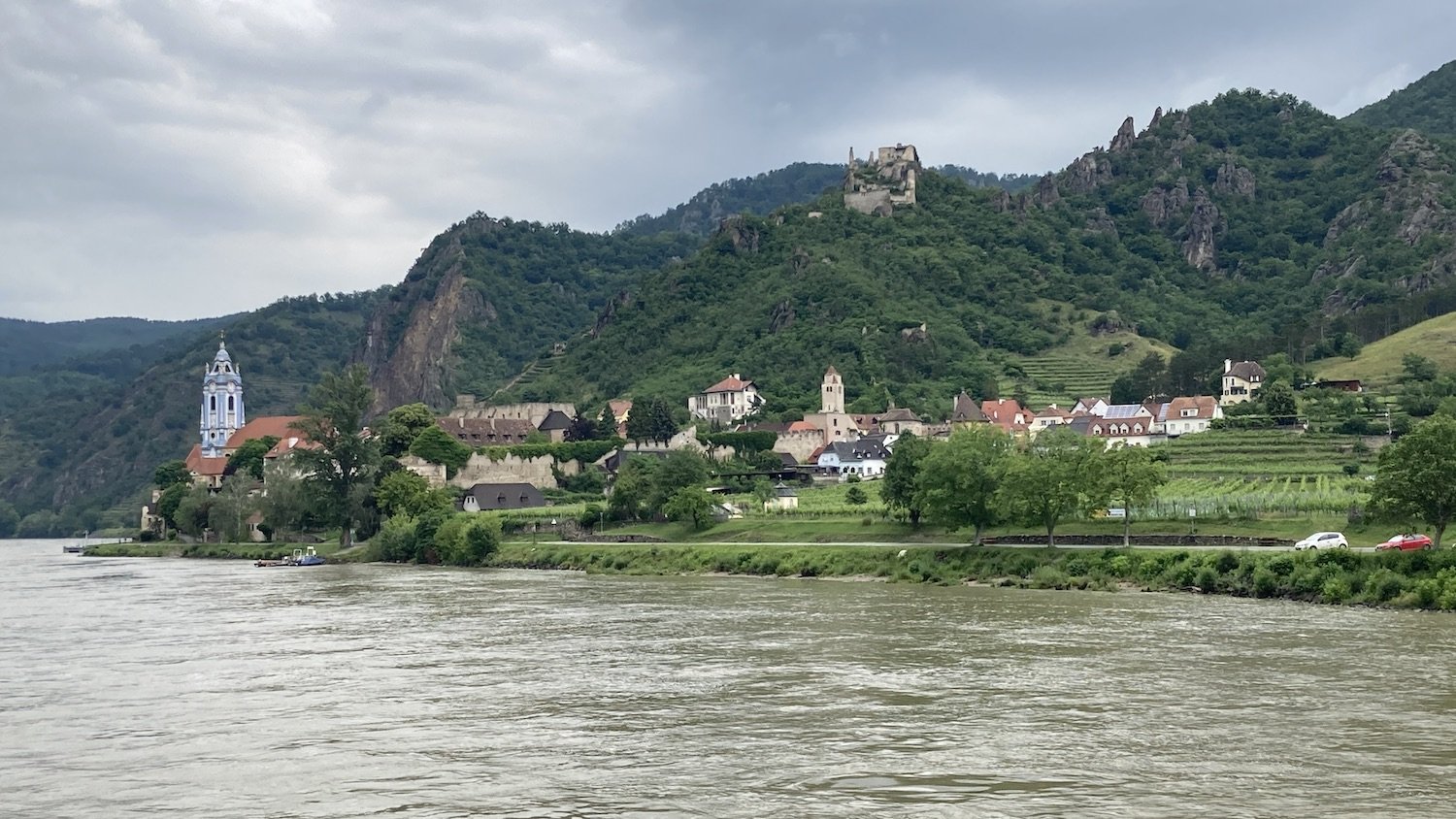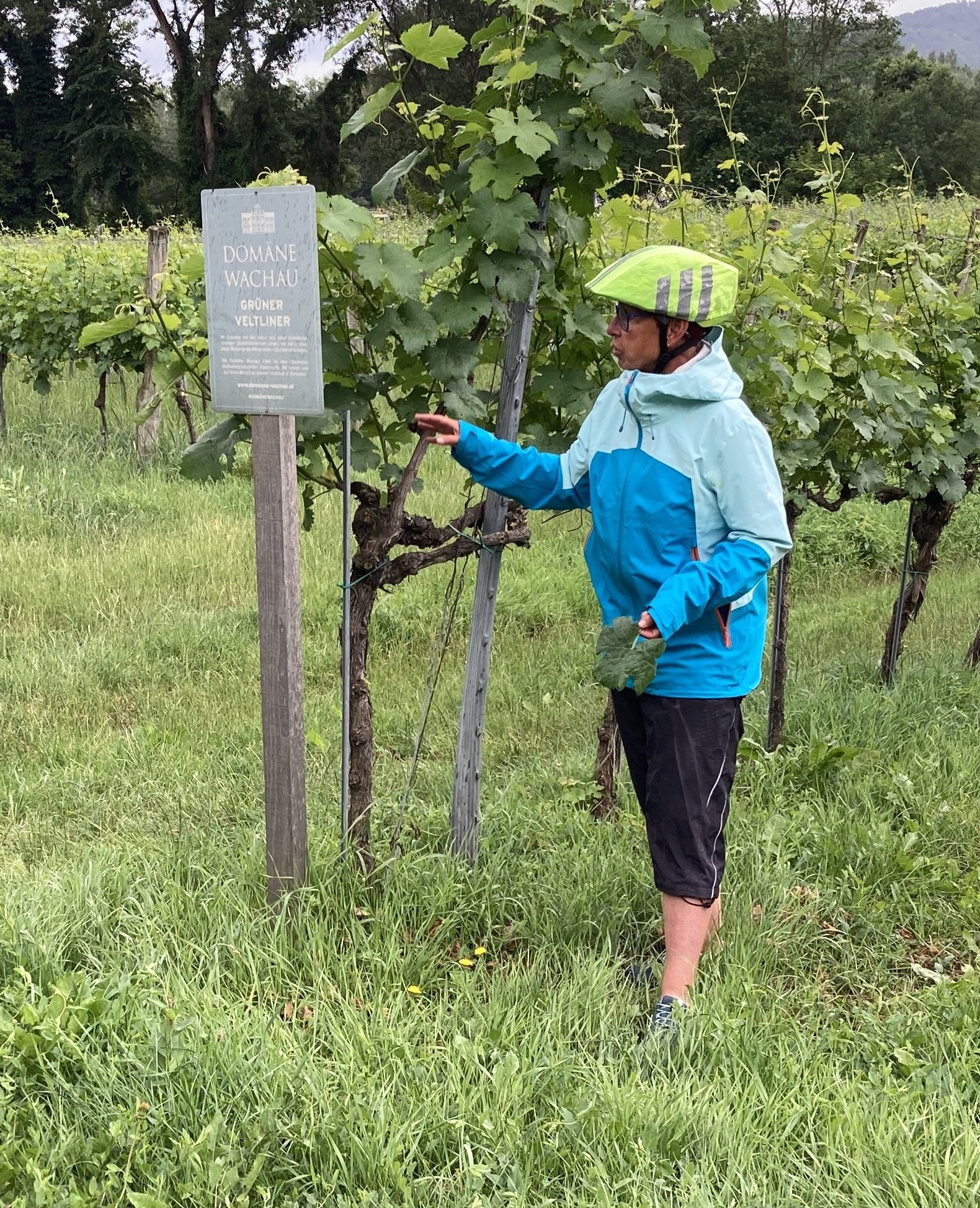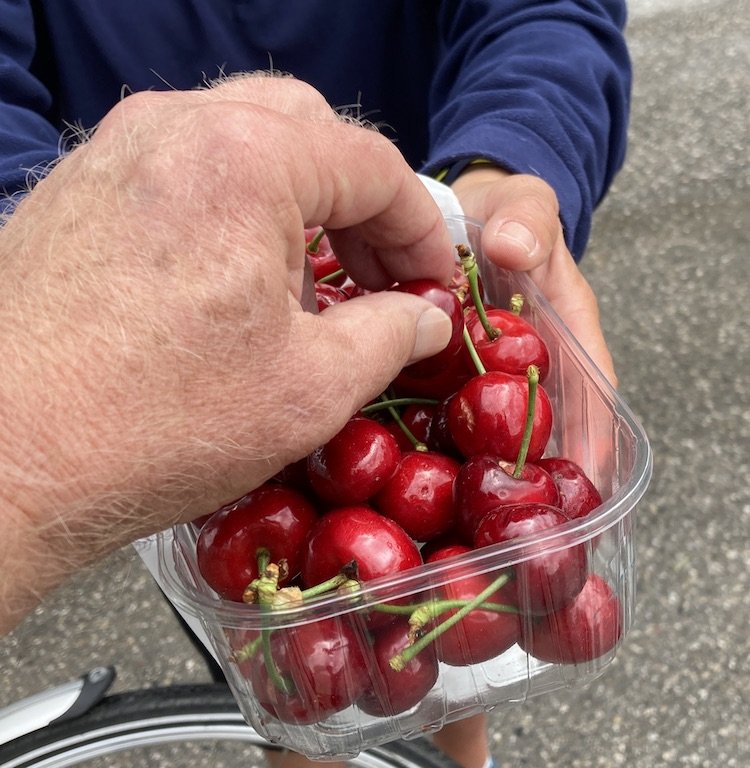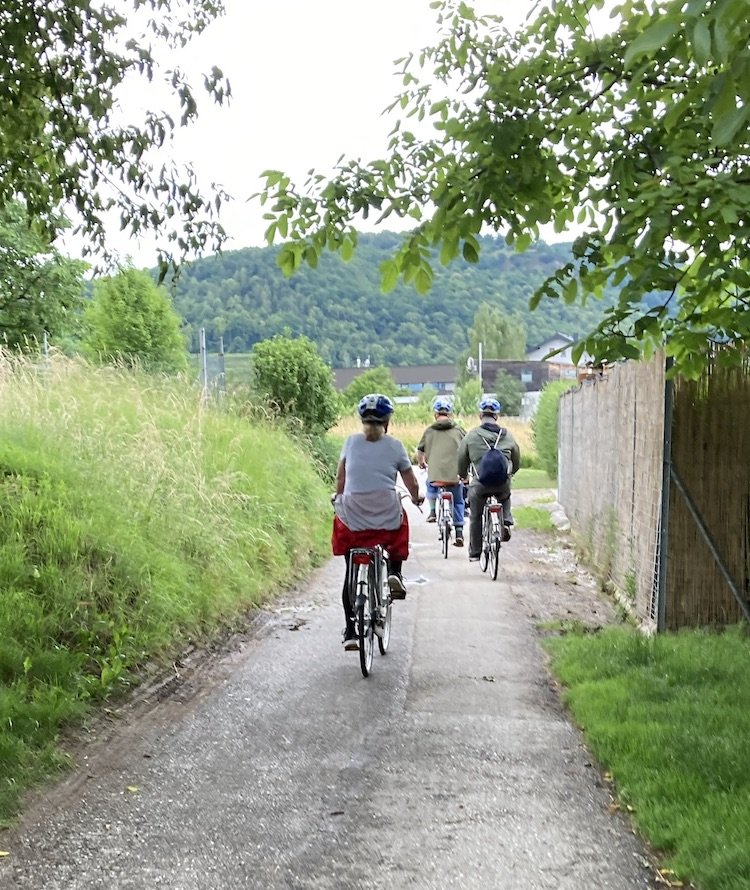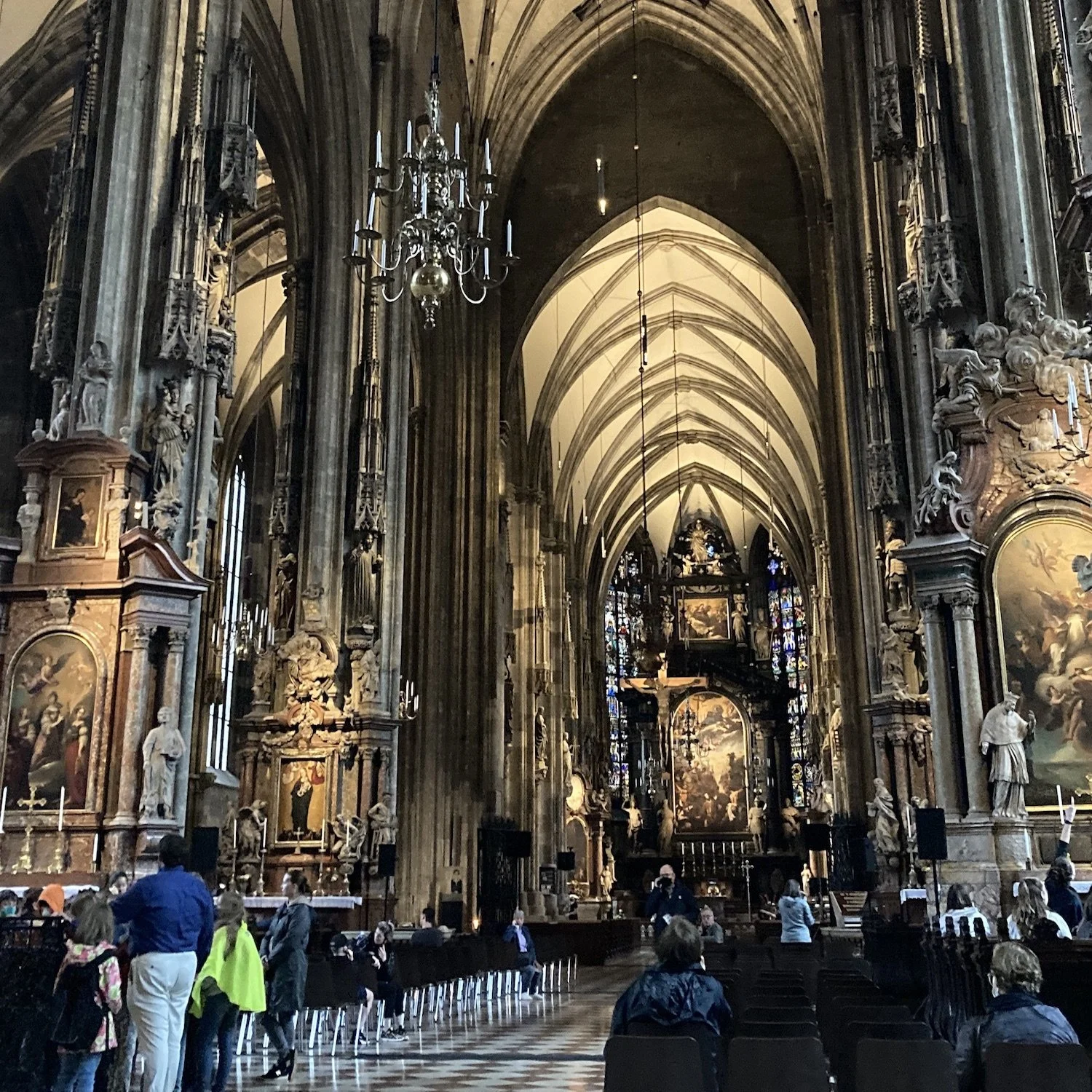The Wachau Valley lies just west of Vienna, Austria, between the villages of Melk and Krems. It is twelve miles of rich fertility, picturesque castles, and magnificent churches. Vineyards creep upslope step by step and press against heavy forest overhead. Below, groves of apricot and cherry trees line the valley floor. The Danube flows through it it all, like a ribbon down the spine of a book.
The story here is more ancient than we know, but certainly by the Roman period the agricultural features we see from the deck of the AmaVerde began to be established. Mediterraneans carried the grape to this northern frontier and established land-use trends that continue to this day. Epicureans and daydreams vacation here. UNESCO added the Wachau Valley to the list of World Heritage Sites in the year 2000.
View to the village of Dürnstein in the Wachau Valley. The castle above the city was the place where King Richard I of England (“Lionheart”) was imprisoned in the 12th century.
We tied up at Weißenkirchen, a quaint village. Vicki, myself, and three other passengers stepped off the ramp and met our biking guide. Lise had the appearance of a weathered cyclist, but her demeanor was anything but tired. She was brighter than her burgundy hair and was delighted to see us. Weather and distance had scared away the others. Our little group would ride downstream on one side of the river, cross a bridge at Krems, then ride upstream to a ferry that would return us to Weißenkirchen, three hours and twenty miles later. I was pumped. Vicki wasn’t so sure.
“I haven’t ridden a bike this far in 45 years.”
“You’ll be ok. I’ll stay with you.”
The AmaVerde’s health coach would stay with us as well. She would bring up the rear.
We tested and adjusted the bikes to Lise’s satisfaction. Then we rode through Weißenkirchen to get a feel for the road. Afterwards we entered the vineyards.
It was glorious. We rode through lanes and alleys and trails. From time to time Lise stopped and explained the different kinds of grapes and the many uses of apricots. She even bought a box of cherries from a roadside stand for all of us to try.
The highlight of the day for me was a stop at Mautern an der Donau. Here, recent excavation continues to reveal the best preserved Roman fort in all of Austria. As in the case with Passau (see post here), this site was part of the line of defenses (Limes) built along the river to monitor the northern flank of the empire.
Lise emphasized how these fortresses of auxiliaries were defensive in nature, but were also used as trading points and lines for communication. “The tribes were not fighting the Romans all the time. In fact, it was the Romans who taught them how to grow the grapes.”
I wish we could have poked around longer, but we had to ride on.
New excavations of the Roman fort at Mautern an der Donau.
The return ride was a bit tougher. There were a few hills and the wind was against us. But in the end everyone arrived at the ferry. From here we crossed the Danube. We high-fived all around.
Lise chatting up with the locals on the ferryboat.
We are having a relaxing time river cruising on the Danube. We are traveling from Vilshofen, Germany to Budapest, Hungary. Bus rides to Salzburg, walking adventures in Passau, bicycling in Vienna and other excursions fill in our days on the water. If this sounds like the kind of trip that you would be interested in, contact me at BibleLandExplorer@gmail.com.

